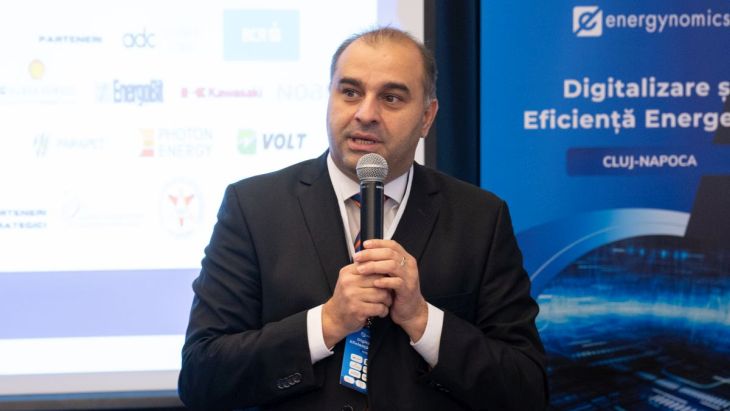Cluj-Napoca City Hall prefers public and alternative transport over the use of private vehicles to cope with a more than seven-fold increase in the number of vehicles over the past three decades. The municipality has prioritized the transport components it will invest in, with public transport in first place, followed by alternative transport, pedestrian transport and private car travel in last place.
“In 1990 there were 40,000 cars in the city, today there are over 220,000 cars, plus 20,000 student cars, plus another 40,000 from other counties,” said Dan Tarcea, deputy mayor of Cluj-Napoca, at the conference “Digitalization and Energy Efficiency – Cluj-Napoca”, organized by Energynomics.
50% of the city’s public transport is electric, and by 2028 it will be fully environmentally friendly. By then, public lighting will be entirely LED.
With 32% of greenhouse gases coming from the transport sector, the city is considering a series of investments to reduce car traffic and emissions.
One such project is the 42-kilometre-long Metropolitan Ring Road, which will require an investment of 2.1 billion euros and will be complemented by a network of cycle paths. Another project is the metro, valued at 2.1 bn euros. Of this amount, 300 million euros will be allocated from the NRRP. A metro train will also link Cluj-Napoca with neighboring villages, and a number of spaces now occupied by cars will be turned into pedestrian areas.
In the district heating sector, the strategy of Cluj-Napoca City Hall is to attract more than 200 million euros in funding for modernization by 2031. For a start, any new apartment block with more than five flats will no longer be able to be equipped with individual apartment power plants, but will have a choice between a staircase power plant, a district power plant or the public heating system.
City Hall officials aim to transform Cluj-Napoca into a zero-emission city by 2030, a goal that the local public authorities will pursue in two directions, namely reducing CO2 emissions and increasing the area that can absorb such emissions.
“Buildings emit 35% of greenhouse gases. We have already built 2,500 apartments and another 58 blocks will follow, including from European funds,” Tarcea said, adding that there are already photovoltaic panels on eight public buildings and another 13 such projects in the pipeline.
An experimental photovoltaic project was also recently inaugurated in Cluj-Napoca on 1.2 hectares of land, including a wind component.
“We have this 3-30-300 strategy. This means that every citizen should see at least three trees from their window, every neighborhood should be 30% covered by a tree canopy and every citizen should have a green space within 300 meters of their home,” said the deputy mayor.
Dan Tarcea also referred to digitalization, which he described as a key component in the area of increasing quality of life, a concept that includes many more aspects related to local authority relations with citizens.
The conference “Digitalization and Energy Efficiency – Cluj-Napoca” was organised by Energynomics with the support of our partners ADC, BCR, Elgeka Ferfelis, EnergoBit, Kawasaki Gas Turbine, Noark, Parapet, Photon Energy, Volt.
